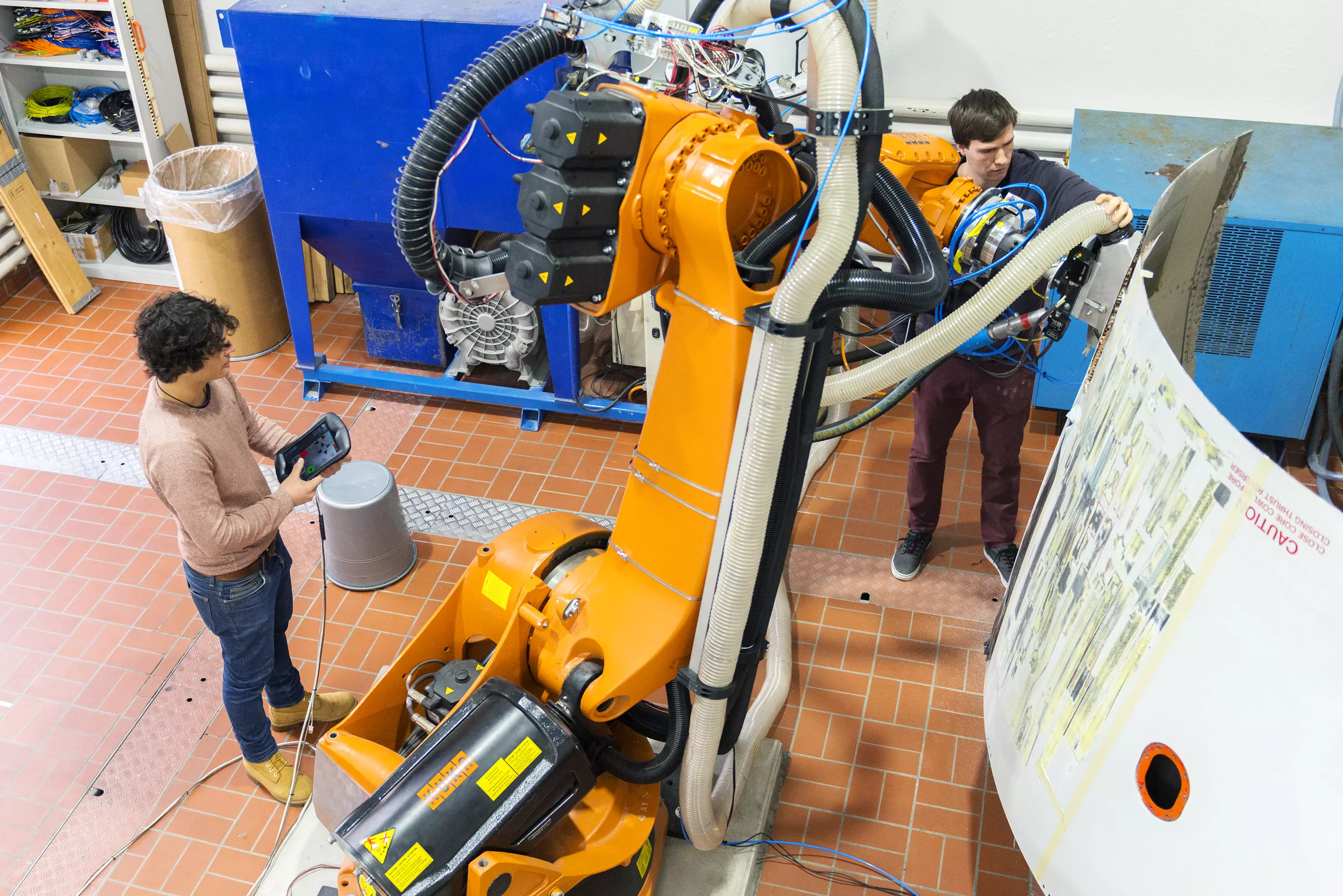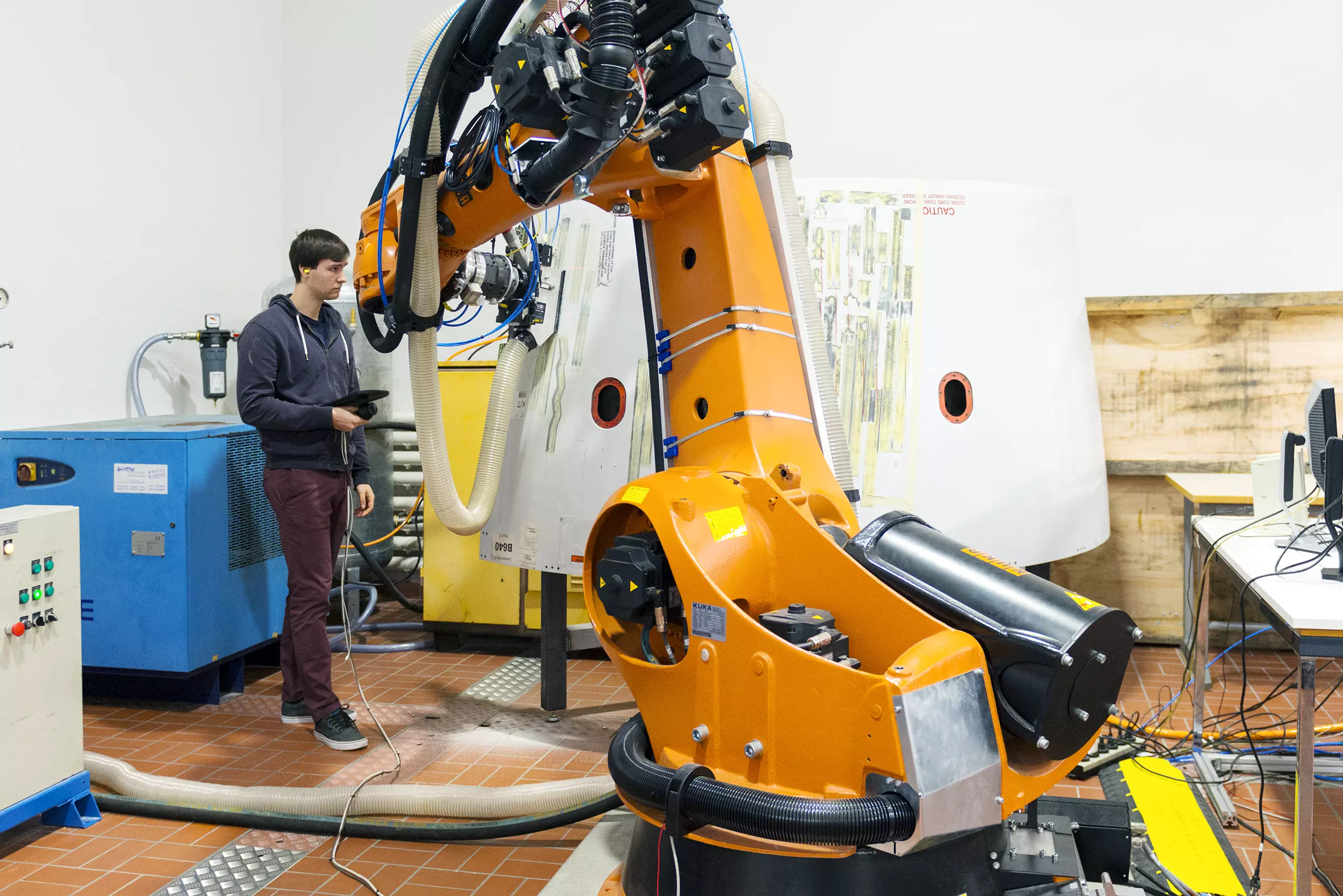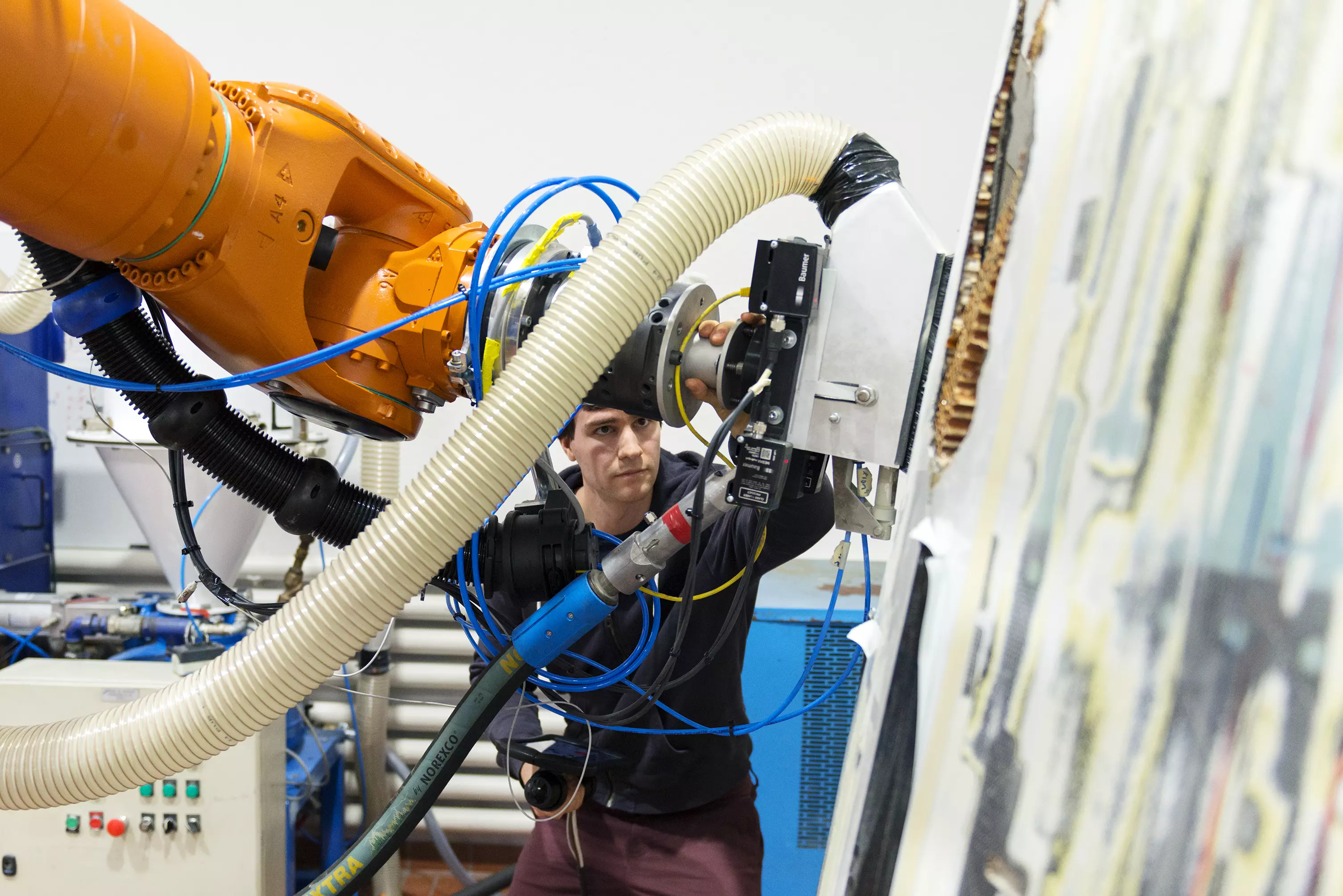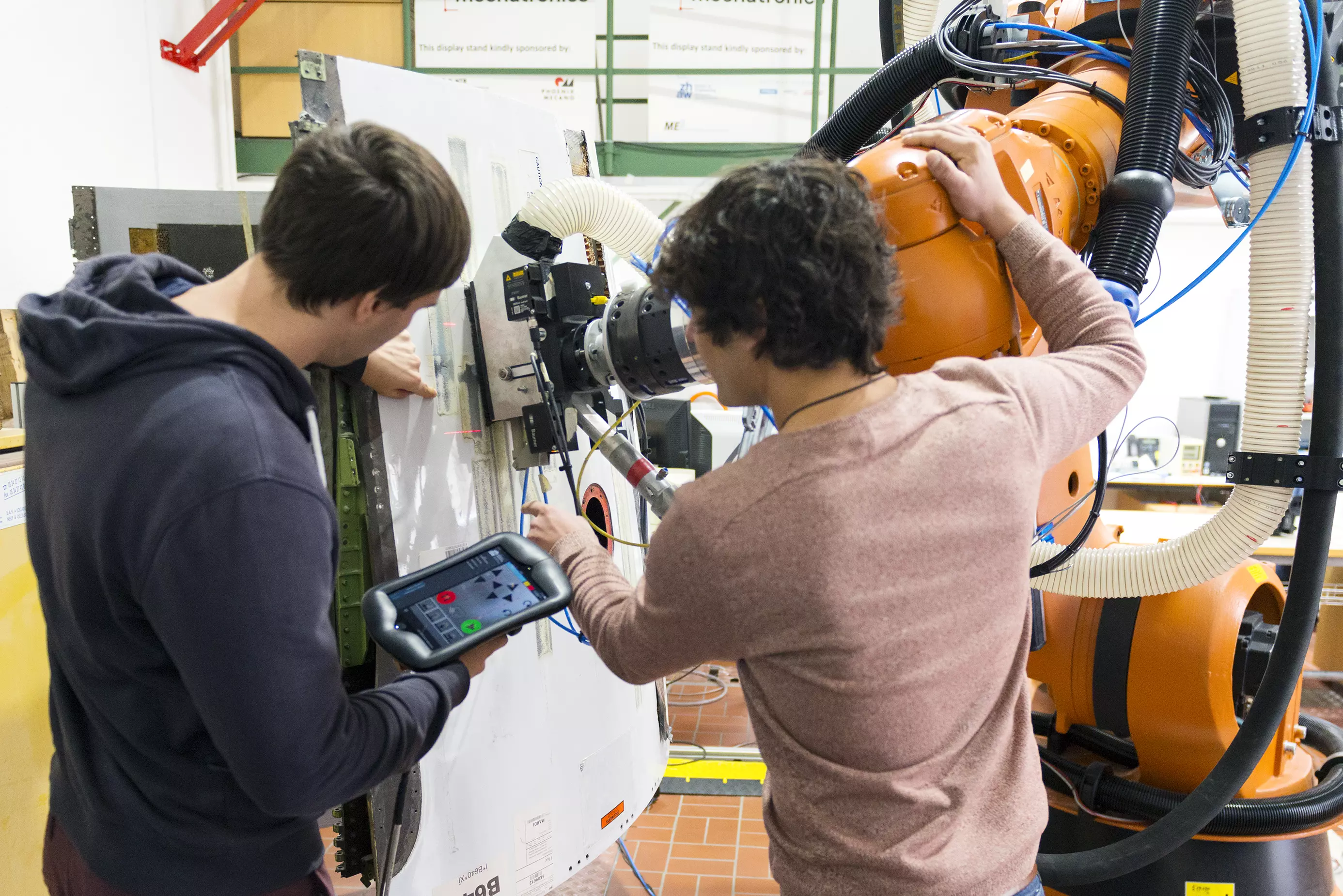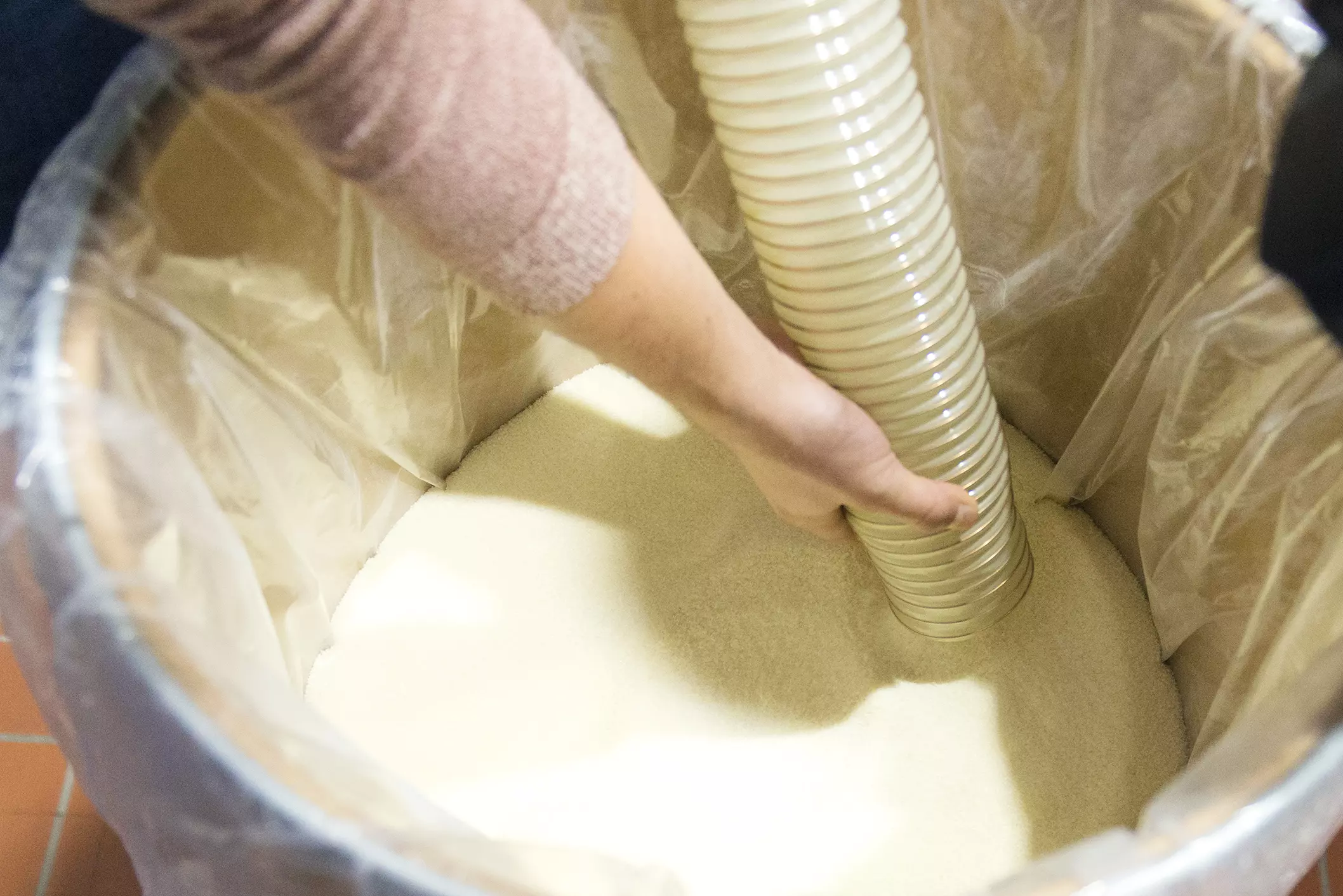High-precision robot uses cornstarch to remove aircraft coatings
Aircraft paint is stripped off regularly. So far, this has mostly been a laborious procedure involving hand-held grinders or chemical agents. A new method of abrasive blasting with cornstarch could change this. Researchers at the ZHAW have developed a robotic system that can be used as a tool for this new procedure.
Aircraft components like engine cowlings are re-coated on a regular basis during maintenance work. For this purpose, the existing paint coat needs to be stripped off first. So far, this has mainly been accomplished with chemical agents, or manually with grinding machines. A new abrasive blasting procedure developed by the Sappi company uses cornstarch as blasting material. The starch is propelled onto the painted surface through a nozzle. It is crucial for this procedure that the nozzle is guided over the surface at a constant rate, while always keeping the same distance from the surface. This is especially important for fibre composite components. Only a few micrometres can make the difference between removing the paint cleanly and damaging the synthetic resin surface, which is expensive to repair. Therefore, researchers at the ZHAW School of Engineering have developed a semi-automatic solution for this type of precision work in the Eurostars Ecostrippair project.
Collaboration replaces programming
“The degree of precision necessary calls for the use of robots, of course,” says project leader Marcel Honegger of the ZHAW Institute of Mechatronic Systems. “However, instead of programming a fully automatic robot, we have created a system of collaboration where the workers use the robot as an intelligent tool, like an extended high-precision arm, so to speak.” The robot is controlled manually at all times. To facilitate this, the ZHAW researchers have designed a compact control console based on a tablet computer. The user first needs to manually bring the robot’s arm, with its sandblasting nozzle attached, into the starting position. The robot then regulates the alignment and the distance of the nozzle to the surface on its own and controls the appliance’s speed precisely.
Procedure easier on surfaces and staff
The robot moves the sandblasting appliance evenly along the aircraft’s surface. With its sensors measuring force and distance, it can also handle curved surfaces effortlessly. “Thanks to its high precision, the system only removes the paint, while the component’s surface underneath remains intact,” states Marcel Honegger. “What’s more, this procedure is also more efficient and ecological than conventional methods.” No chemical agents are used; the appliance relies only on cornstarch as blasting material. The starch is contained in a closed circuit, passing through the nozzle several times.
“Finally, end-users will also profit from the new system, since it implies much less physical strain than conventional paint removal,” the ZHAW researcher comments.
Ready for field test
To guarantee safety in the robot’s working area at all times, the system is equipped with a second control unit which exclusively serves monitoring purposes. “There are sensors that control all angles and speeds,“ says Marcel Honegger. “If irregularities occur, the system automatically stops at once.” Initial tests in the ZHAW’s robotics laboratory have been successful. Now the system is about to be tested at Air France. According to Marcel Honegger, the appliance could be used not only in the aviation industry, but also in the rail sector.
Contact
Dr. Marcel Honegger, Institut für Mechatronische Systeme, ZHAW School of Engineering, Tel. 058 934 78 26, E-Mail marcel.honegger@zhaw.ch
Matthias Kleefoot, Public Relations, ZHAW School of Engineering, Tel. 058 934 70 85, E-Mail medien.engineering@zhaw.ch
